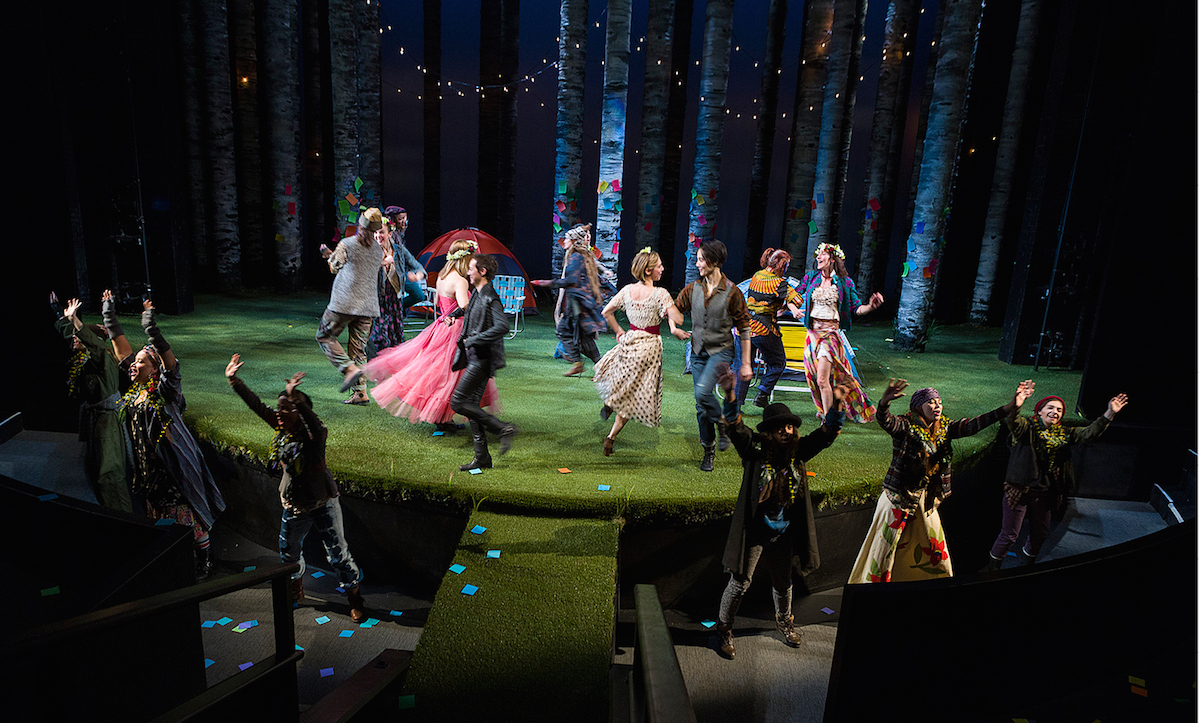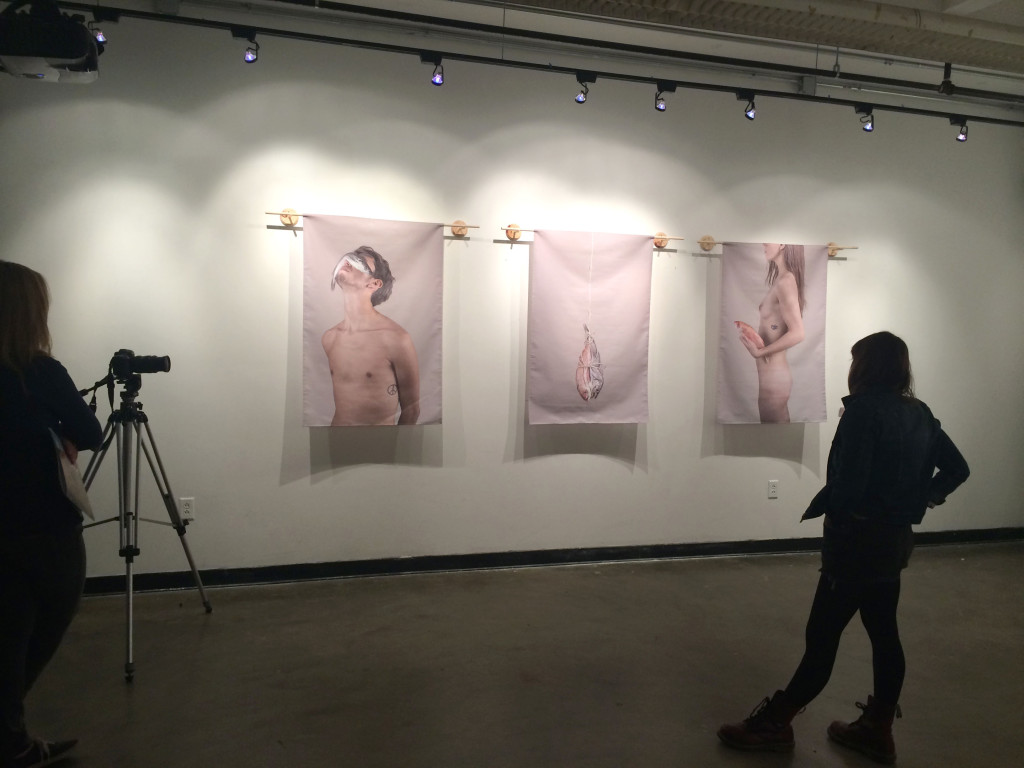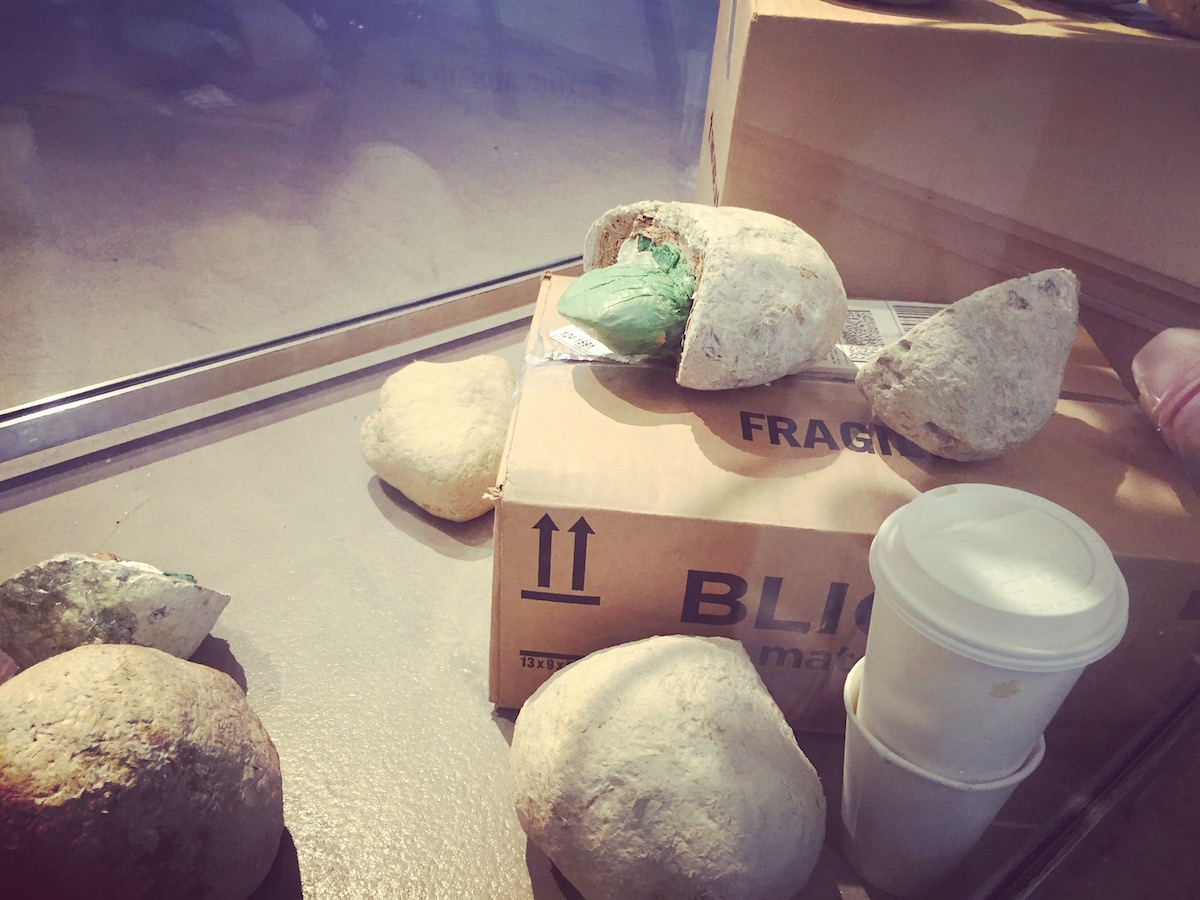Saskia Krafft Interviews Maika’i Tubbs about his work and experiences as an Artist in Residence at the Museum of Arts and Design
Maika’i Tubbs utilizes found detritus to create sculptures and installations around themes of obsolescence, consumption, and ecology. He regards discarded objects as untapped resources and transforms them to reveal a world of hidden, limitless potential. His process-oriented work reflects honest observations of unnatural familiarity influenced by the blurred boundaries between organic and artificial life.
In the MAD Artist Studios, Tubbs is exploring a project derived from oceanic observation. Stepping Stones are sculptural rock formations made of trash and waste materials inspired by plastiglomerate, a new geological term used to describe the fusion of micro plastic, rock, sand, basalt, coral and wood discovered last year on Hawai‘i Island. Tubbs will be combining the forms to make larger pieces before he cuts into them to reveal their hidden complex layers.
Tubbs received his BFA in Painting from the University of Hawai’i at Manoa and his MFA from Parsons The New School of Design. Tubbs has exhibited internationally.
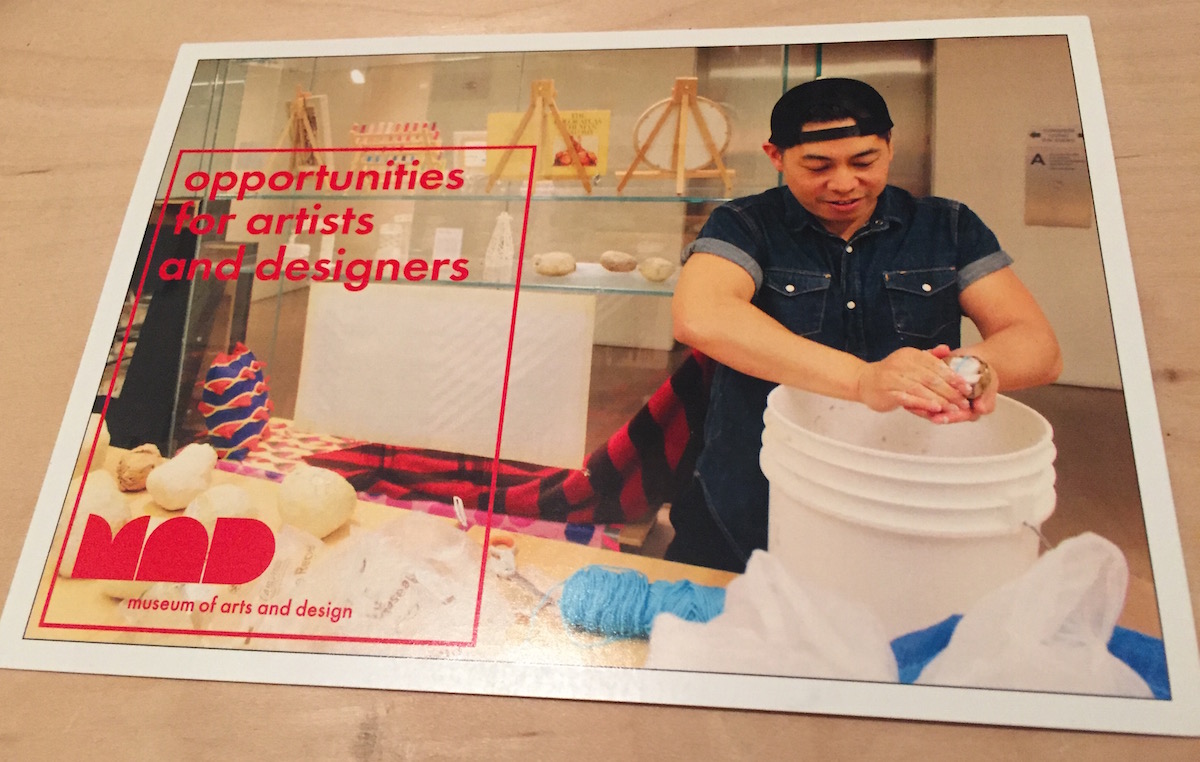
Hi Maika’i. Tell me a bit about yourself and the residency program at the Museum of Arts and Design.
The way this artist residency works is that there are six artists at a time for the duration of four months. Each artist gets one day a week to work at the museum. The other current artists in residence work with glass, sugar, paper, embroidery, there is a mixed-media artists and then me – I work with trash. The materials I use are plastic shopping bags, plastic containers, cardboard, and the outside is found paper. I mix it with water, grind it up, but don’t use any kind of glue. It’s very low- tech, but has a lot of labor in it.
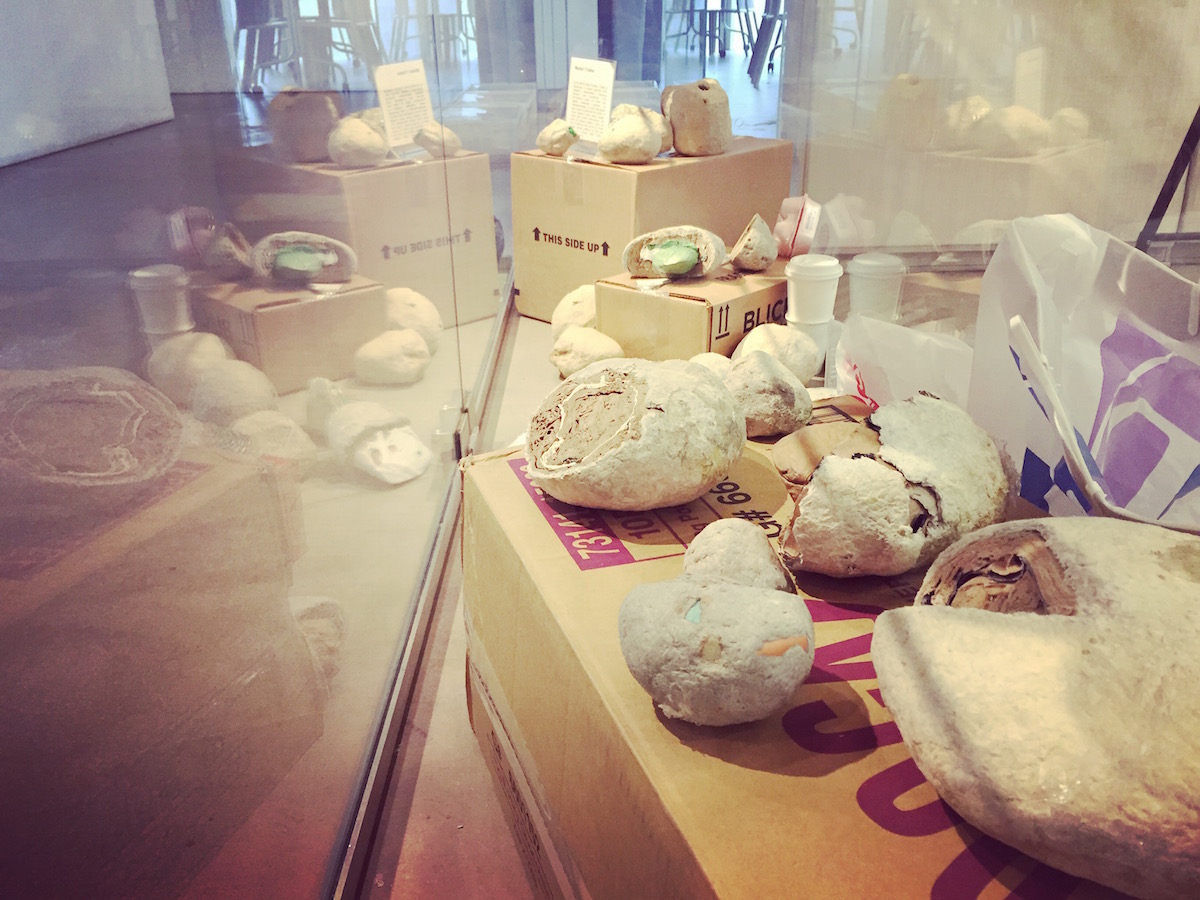
How did you get interested in working with trash and creating these special kind of rocks? Did you always work as a sculptor?
My undergrad degree is in painting. After that I took a three year break, opened up an art gallery with friends back in Hawaii, and then I started to do more 3D works out of other objects. Weird things and obsolete things.
For seven years I was working with plastic, plastic utensils and plates and turning them into huge fine art installations to take over spaces. They looked really cool because everyone was so used to seeing sculptors working with glass or ceramics. But I got tired working with plastic and, although I just heat it and bend it, it’s toxic to work with even if I wear a full breathing protection. Finally I moved to New York City for graduate school at Parsons about 2 1/2 years ago.
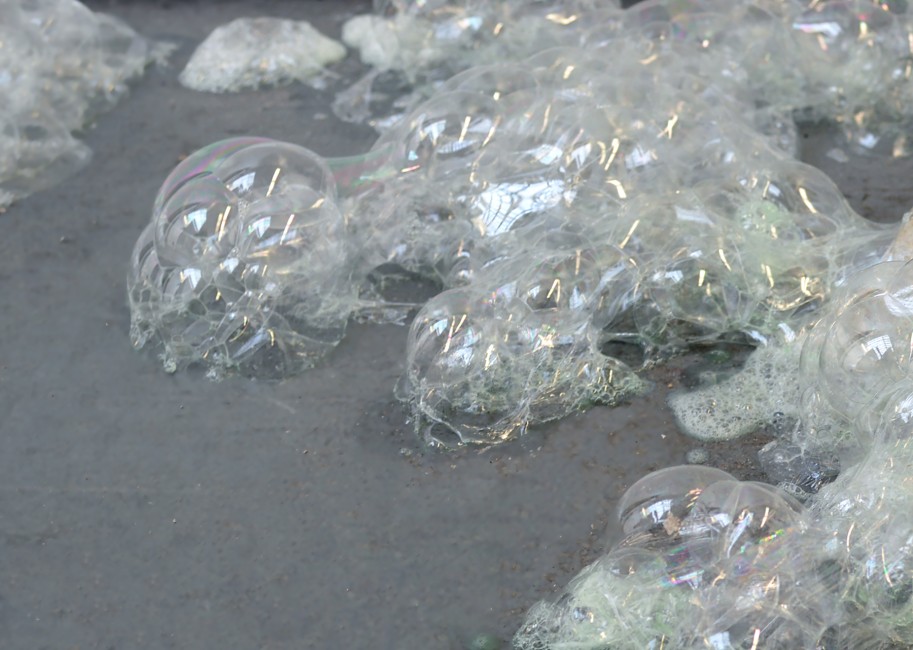
How did moving to the New York City affect your work?
Since I’m from Hawaii I’m not used to so much trash, so I ended up working with trash for the last two years. Additionally I did projects with cardboard, worked with printmaking, and tried to find a way to turn found paper into printing ink. I wanted to work with the giving raw substance itself.
How do you process this raw material into your sculptures?
I basically turn found paper into these rocks by drying it out, sanding it until you get this very fine dust, and then mix it with a transparent base. I am using these rocks to catalogue all the found plastic. It became this ongoing project for me. I love making them.
When I last installed them that was at my thesis show. I just installed it on the ground. I wanted it to look like a coastline and then I bubbled over everything and the bubbles kept their shape for around 2 weeks before they would start to deflate. It was mimicing sea foam.
So everything that I’m doing now is around 8% trash and a minimum of 80% raw material. The rocks are almost all trash. I just use some yarn to create the shape of the inside plastic materials.
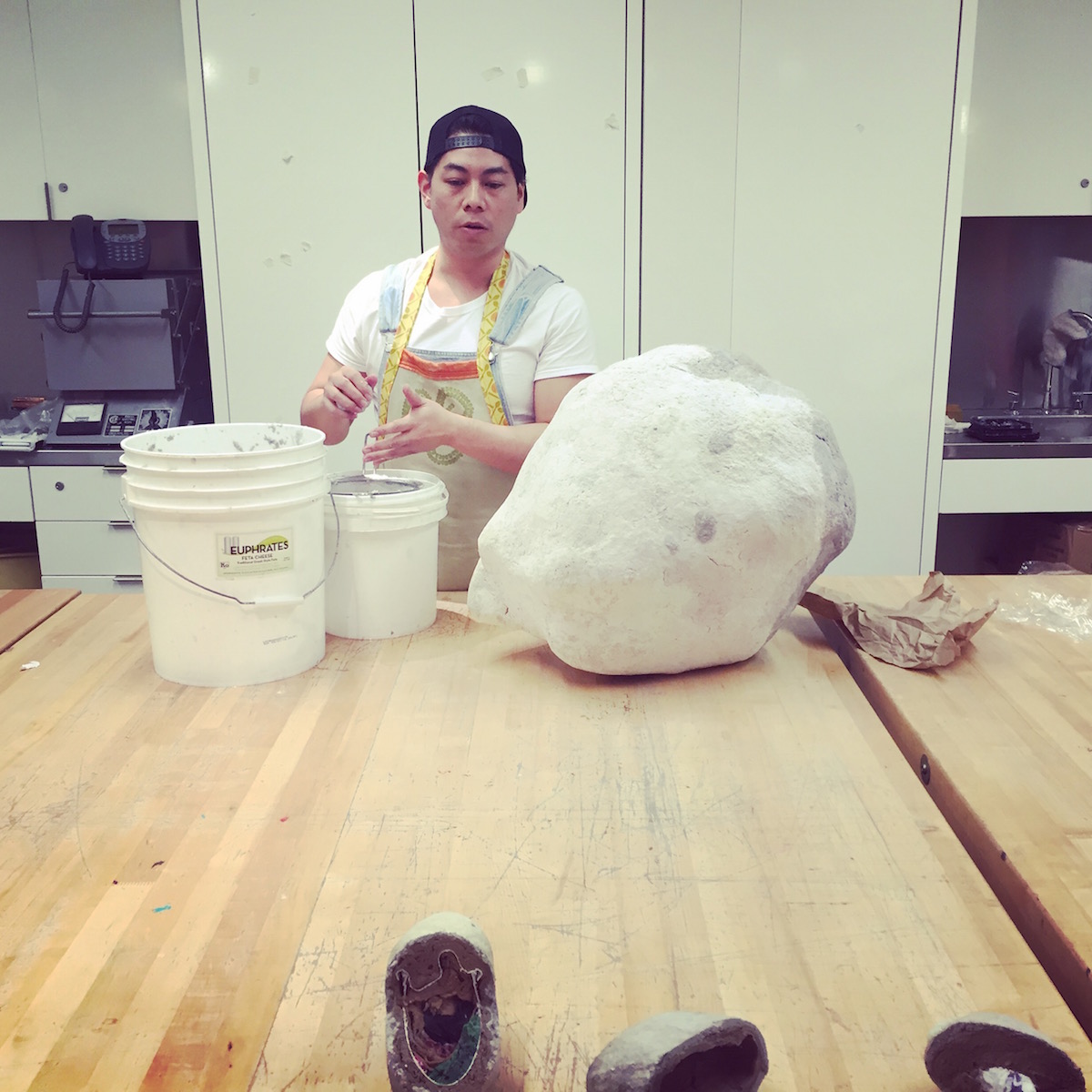
In opposition to many contemporary painting standpoints your color scheme includes more muted colors.
I have been working this way for several years – I was trying to figure out how to combine pretty bright things like plastic shopping bags with the colors more inspired by nature. A lot of art in the continental US is very bright, crazy, neon-colored because you want others to notice it, which is the complete opposite of how I work.
I usually work small and make lots of them. I like multiples a lot and repetitive processes in order to get these different results. There is no plan. People like predictable work and are scared of the result being terrible, but that’s what I appreciate most and what I’m interested in. You can’t avoid it looking terrible, but that’s also fun.
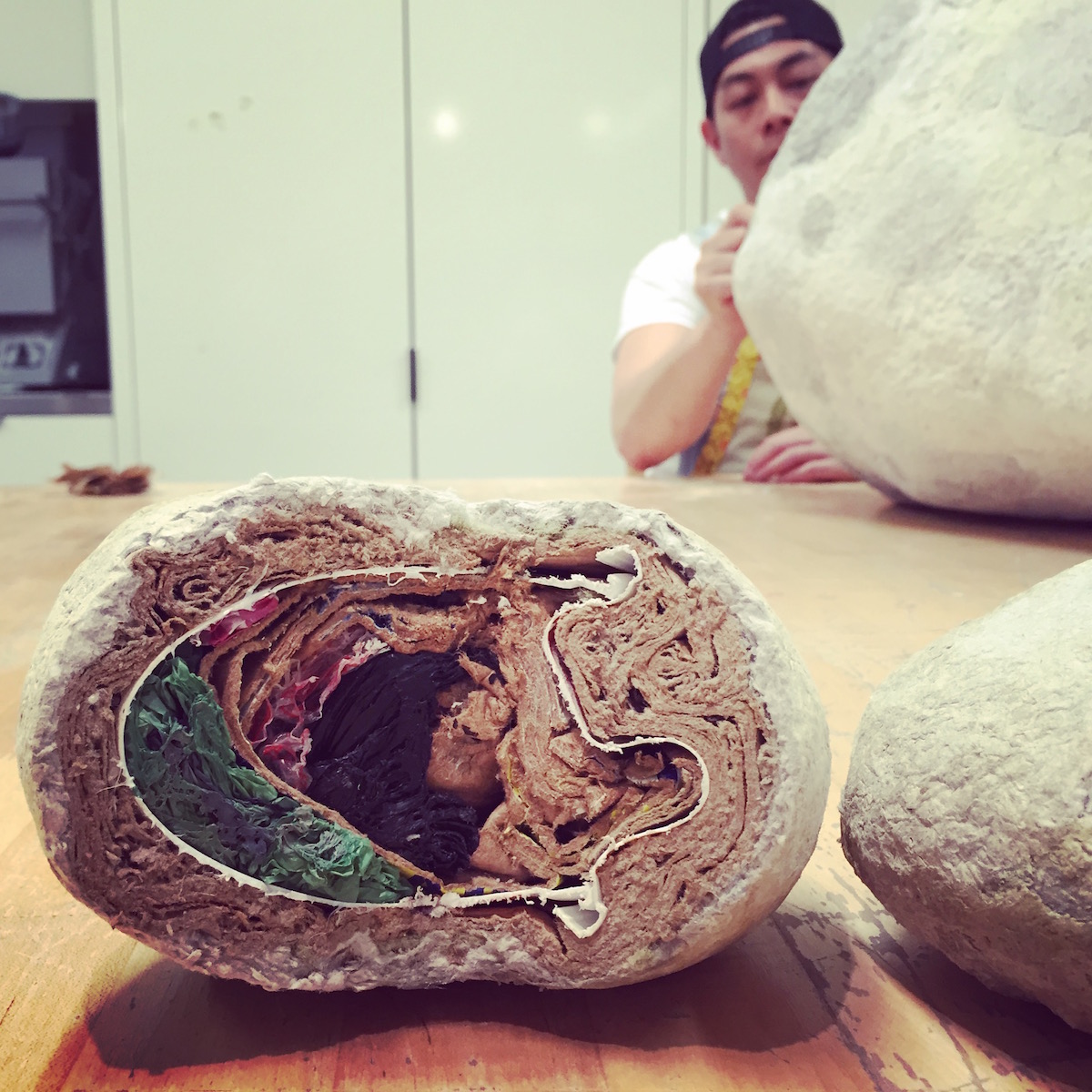
At the moment in your career you’re only working in this studio?
I had a studio when I was in grad school, but for now I have this studio once a week as part of the Museum of Arts and Design Residency Program. Other than that I work in my apartment. This stone here is the biggest one I’ve ever done, but since I work small, I can work here but can also further work with it at home. The biggest machine I use for my work is a blender.
How do you feel about connotations of your work with Papier-mâché done in kindergarten?
Almost everyone does this connection, but my difference is that I’m not using any glue. Papier-mâché is made from paper and glue, but I exclusively use paper. Some of my newer works also contain books. I think of books as being fossils – an outdated thing that people are trying to replace with e-readers, but I think it’s worth holding on to them. You can technically open these works up again when it’s dry and read it again.
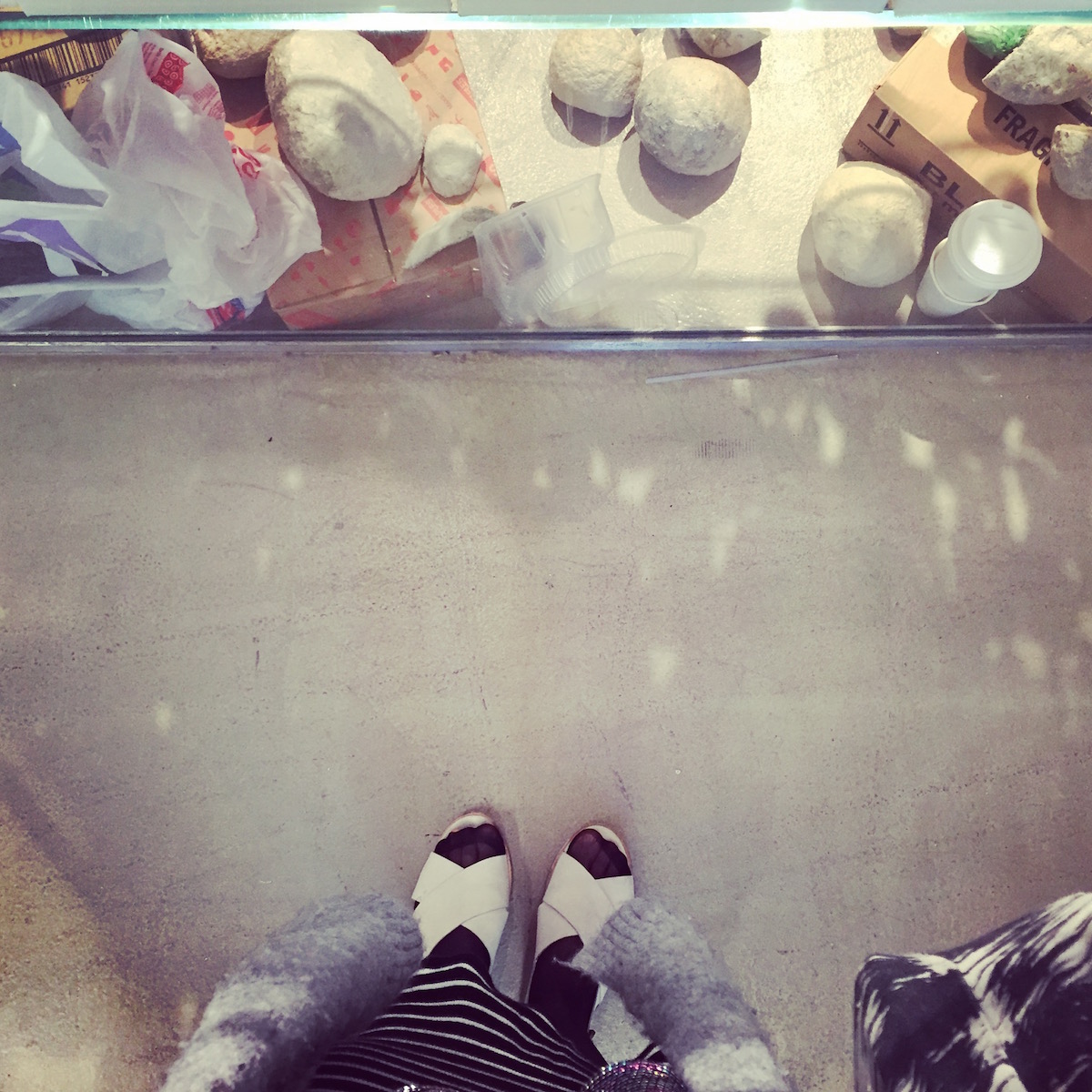
How do you feel when people touch your works?
I love it when people touch them. This is my weird thing: I used to work in a museum and since I’m not just a visual person, I touched everything. If no one’s looking, I’m going to touch it. I think that’s an important way that people learn.
What about preservation?
To preserve something for years and years sounds a lot like hoarding to me and even though I am a hoarder by trade – I basically hoard trash to make stuff out of it – but in my opinion: to save it for generations – that’s what digital reproduction is for. Things should break down as they naturally would instead of preserving it.
How will you set up the show at the end of this residency?
I’m taking all the small ones for the show and this large one I’m currently working on. But I don’t want to put them under glass. Instead of creating an archaeological museum context, I want them out. This would of course also raise the danger of people putting them into their pockets. But even if that happens, that would kind of make me happy – a little bit, that I find trash and have turned it into something which was worth keeping now.
That’s the whole point for me and what I’m obsessed with – transforming stuff that no one gives value to. We are trained to throw it away, once we are done with whatever the initial use of the thing is. What if the object wasn’t for trash? I think a lot about how my ancestors worked with trash. Until we got colonized we used everything. If you got a gourd, you cut it open, dried it out, and used part of it as a musical instrument. One part is a drum and the other one is a cup. The inside part is all reusable.
It is this ongoing cycle of things being used, appreciated and brought back into the cycle of use. And I also get that now: There are so many ways to use things again. This also became my mission in life I guess.
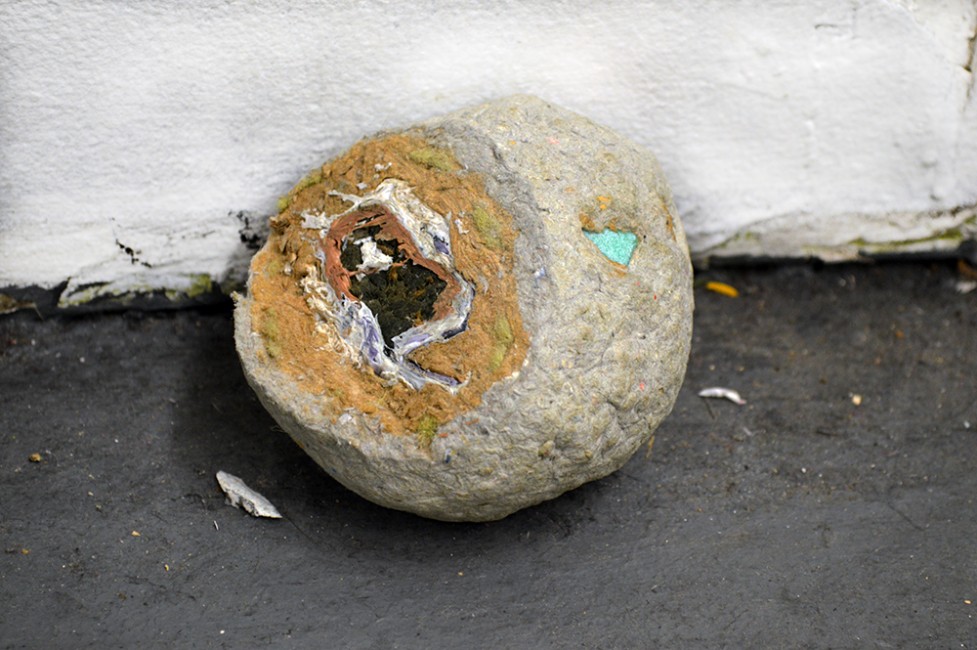
Here in New York you get a plastic bag with every purchase. How is that different from Hawaii where you grew up?
And it’s not even that: here you get two or three bags at a time for everything and most of the times it’s not even heavy. Just recently Hawaii became the first state to ban plastic bags, which is important. This law just passed this summer, on July 1st. And it has been banned also on the other islands for the past year. So there are 3.3 million people on Hawaii and on my island, the main island, over 2 million people. This island was the first one which announced the plastic bag ban. It was initiated by the county.
My island decided not to have plastic bags below a certain thickness, so that if it’s thicker than 0.5mm it counts as a reusable bag, which is terrible. So now they have doubled or tripled the thickness of the shopping bags, to make them count as reusable but people still use them as disposable. You just make thicker plastic bags to go into more landfills and we already ship a lot of our trash away. That was really aggravating. I’m doing a wearable art show in May back home and making it all from plastic shopping bags.
How do you feel about your Hawaiian origins and going back there?
Things are a lot slower there. The only thing that I’ve noticed is, that there is more development now. Our major problem right now is with housing. It’s probably as expensive as New York, but the income is way less. Doctors and lawyers get paid two thirds of what their income would be here on the continent. And because our number one export is tourism, we now have all these million dollars luxury condos getting built in the downtown areas.
It keeps pushing the local population farther and farther up from town. So many of us are moving because we can’t afford the living anymore. Some can stay because their family has land that has been in the family for years, but everything else is ridiculously expensive.
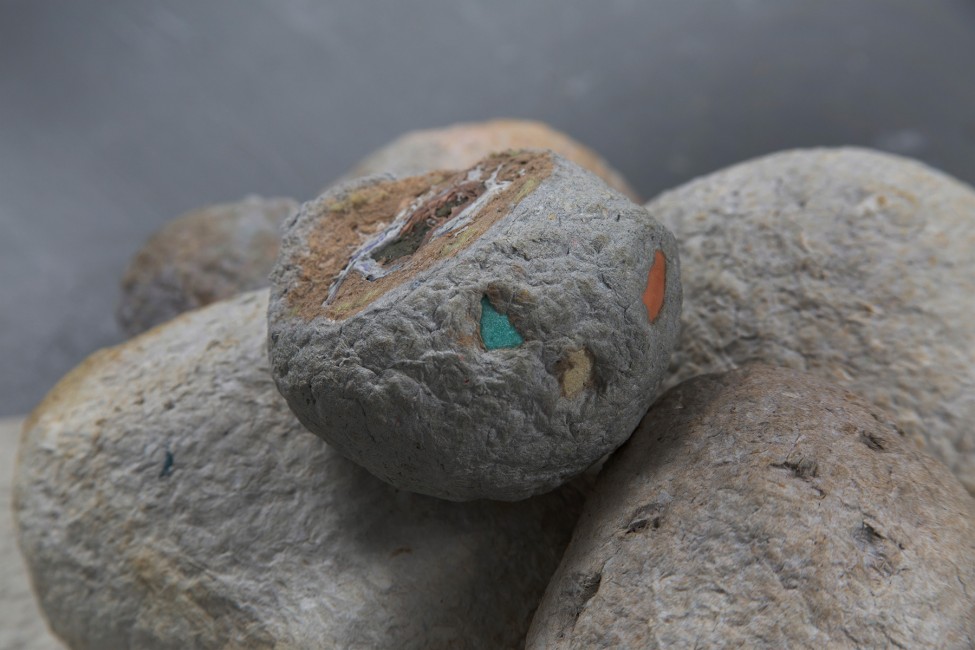
Would you like to move back some time?
At some point yes. I can’t picture myself retiring anywhere else – I definitely want to live there when I’m older, but not for now. Also the art scene is rough. Once you’ve showed in all the major museums and institutions there, there is nothing which can self-sustain your career unless you’re doing work that’s very pretty. Artists are doing beautiful abstract paintings that then go with a luxurious couch or paintings of sunsets and dolphins and other bullshit.
Who are the customers of this kind of art?
I hate to say this, but the customers are not only tourists but also local people. I personally don’t really see a reason why we, who already live in paradise, need a painting of a beach. We’re surrounded by beach. You don’t need that! But yes, if you’re not doing art like that, it gets harder. There aren’t a lot of artists who go back there and use trash to upscale it and turn it into something else.
Once the people have figured out what my work is made of, they want to know why it’s so expensive. That was oftentimes the number one irritation for me. They don’t know how long this took to work with material that wasn’t meant to work with that way. You can talk to a wood- or a metalworker, to a ceramacist – they are working with raw material and it is meant to form that way. When you work with something that already came in a weird shape and you need to figure out how to work around that, that takes time.
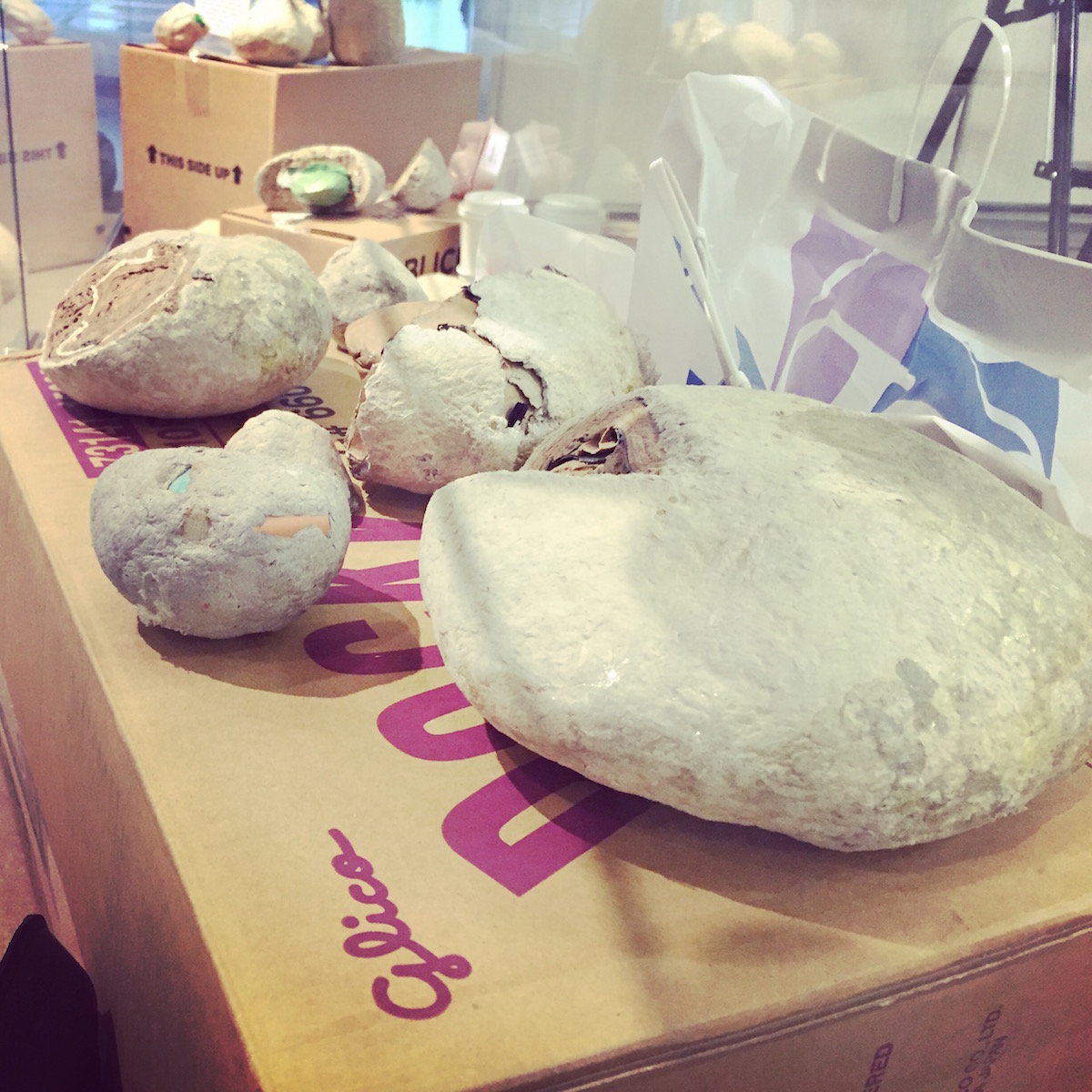
Some people call you a “recycle artist” – what do you think about that?
I don’t really like that term, just because it plumbs you in a certain kind of craft. I’ve seen these people at craft fairs and I love them, but I don’t really want to be grouped in that because there is an important thinking process and concept to my work. Why can’t it just be a sculptor and then it just happens to be made out of this special material?
I kind of get tired of all these social injustice projects, which all want to raise awareness for______. Everyone is doing that now. I don’t know what artists might do after that, but still there is this weird responsibility. All the commercial art can be found in Chelsea and then you have social justice projects that are really big community projects, that are based on a simple technique that everyone uses and they do this great thing for a neighborhood.
And yeah, we brought people together, we brought awareness to water treatment issues, but these projects are financially not sustainable at all. I would do more projects like that, if there would be more pay-off. Somehow I need to pay off my student loans, which is terrible, but I love artists that deal with these issues too. Sometimes I just question what they do after that, when there is too much of teaching people about a certain thing. One has to pay attention that it doesn’t become this blank space of lecturing someone through an artwork.
Have you done any kind of community engaged projects before?
I led a project like that in graduate school where we all gathered to collect materials, to talk, to make. We picked up paper and a couple of plastic containers. We came back, we poked everything and then just filled containers and thereby used them to mold. We coated it after and turned it into an actual object that you can then use and which also serves as a reminder. A super basic, one on one thing.
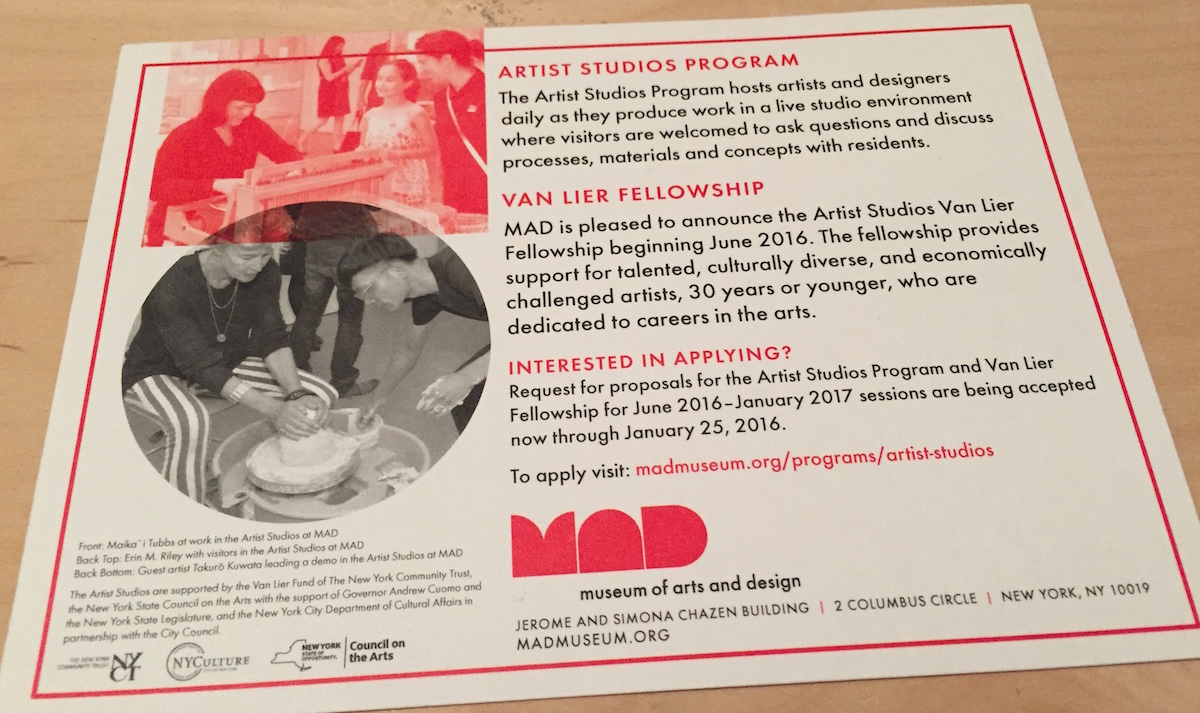
Why did you choose this particular Residency Program?
It’s one of the only residency programs, that pays here in New York and this is definitely my favorite museum in New York, because it’s object based. I came here six years ago when the museum just opened. Their first show was “Second Lifes” and it was beautiful. Every sculpture was made from an object and that’s everything that I’ve ever done. I wanted to be here also because of that specific show.
Do you see the other artist in residence a lot? Do you have time to gather and talk about your projects from time to time?
Since every artist has his or her own day where they come here to work, we don’t really see each other too often. It could probably be helpful to have two of us at a time. We tried it once, and we just kept on talking while working and it was so nice and exactly what I wanted. It’s great to have the space for your own and work alone, but I’m pretty communal.
Margret, the sugar cup artist knows everything about eatable stuff since she’s a professional cake decorator, so she had a lot of good ideas to work on my own stuff. She’s just awesome. I also started making jewlrey with little stones. I got really inspired by using plastic bags and to make cords out of them. Actually I can make them very very fine… She loved my work and wanted to trade.
Author Saskia Krafft studied Art History at the University of Hamburg and Fine Arts and Design at the University of Fine Arts and Applied Sciences in Hamburg, Germany.
